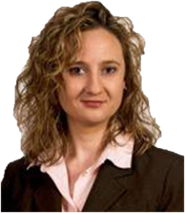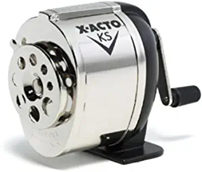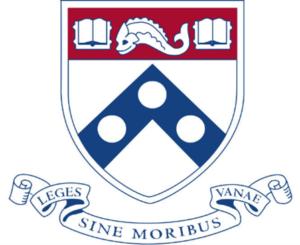A Little Luck and a Lot of Pluck
Teresa L Peterson, P.E., C.M.E., LEED AP O&M, ENV SP (Gannett Fleming, Inc.)
I struggle with these types of assignments. I understand the importance of the  “get-to-know-you” piece, but if you’ve ever written one, you understand my pain. I am as ordinary as they come. I have decisions guided by luck and happenstance. I have moments of pure brilliance and others of comedic naivety. I’ve worked hard with my fair share of all-nighters to meet a deadline. Every day I count my blessings that I can earn a comfortable living doing work that I find meaningful, rewarding, and challenging. It is humbling to think of those few key moments where life could have taken me in different directions.
“get-to-know-you” piece, but if you’ve ever written one, you understand my pain. I am as ordinary as they come. I have decisions guided by luck and happenstance. I have moments of pure brilliance and others of comedic naivety. I’ve worked hard with my fair share of all-nighters to meet a deadline. Every day I count my blessings that I can earn a comfortable living doing work that I find meaningful, rewarding, and challenging. It is humbling to think of those few key moments where life could have taken me in different directions.
I owe my career to my high school chemistry teacher. He was a new teacher and full of enthusiasm mixed with just enough wit to connect with teenagers. Along with a list of safety rules for learning in the lab, there was one rule that was made to be broken. No one could go behind his desk until we had earned the credentials to do so. There was nothing particularly special back there – a better pencil sharpener compared to the rickety hand crank sharpener in the rear of the classroom. He had simply delineated his  space in the classroom. For an honors student accustomed to teachers bestowing privileges for good grades and cooperation, this was unusual. Why couldn’t I use the good sharpener? Why did I have to sacrifice my graphite to the gods of note-taking torture?
space in the classroom. For an honors student accustomed to teachers bestowing privileges for good grades and cooperation, this was unusual. Why couldn’t I use the good sharpener? Why did I have to sacrifice my graphite to the gods of note-taking torture?
And the challenge thrown down by this guardian of the good sharpener? Only engineers can roam behind the desk. And only the “best of the brightest” can become engineers. Engineering was among the toughest, if not the toughest, course of study in college. Many would try; few would succeed. I intended to rise to the challenge for no better reason than to prove I could.
At the time I didn’t know what being an engineer meant. I selected a college program that allowed me to pursue environmental engineering but fortunately I selected a school that also emphasized innovation, entrepreneurship, and knowledge. While I’d like to take credit for a lifetime of strategic decisions that landed me where I am today, I am really the product of a series of happy accidents. I was lucky to participate in a program that taught critical thinking to elementary and junior high students. I was  lucky to have the grades to be accepted at the University of Pennsylvania, with just enough financial aid to make it possible. I was lucky to have supportive parents who let a naïve kid from Western Massachusetts move six hours away to live on her own in West Philadelphia. I was lucky my TA persuaded me to sign up for the EIT test while still a senior in college, so I graduated with that box checked.
lucky to have the grades to be accepted at the University of Pennsylvania, with just enough financial aid to make it possible. I was lucky to have supportive parents who let a naïve kid from Western Massachusetts move six hours away to live on her own in West Philadelphia. I was lucky my TA persuaded me to sign up for the EIT test while still a senior in college, so I graduated with that box checked.
To be fair, I have worked hard to earn my spot. I put in the time to earn the grades and graduate. I put in the time as an EIT to earn the right to sit for the PE exam. And I passed the PE exam. All tremendous accomplishments. And if that was it, that would have been enough. But wait – there is more!
Always the curious learner, and intent on understanding the “why” as much as the “how”, I started my career with a degree in systems science in engineering. I began working in environmental and water resource engineering and finding opportunities to learn more about the world around me. I adopted an attitude to search, explore, and evaluate new ideas. A fundamental understanding of hydraulics and system modelling followed. To specify pumps, one must understand electrical design and control systems. Of course, delicate motorized and electrical equipment must be kept in a building. Buildings require permits to be constructed and maintenance crews require access for heavy equipment to maintain the gear in good condition. The best locations for buildings and tanks are often fraught with environmental considerations like hazardous soils, steep slopes, and wetlands. So along the way I’ve picked up an understanding of roadways, traffic design, site design, mechanical, heating & air conditioning, electrical, architectural, and permitting. I’ve worked my way through DOT highway design manuals and the MUTCD. I’ve fumbled through telecommunications and fiber optic projects. I’ve completed projects at water treatment plants, airports, pharmaceutical manufacturing facilities and passenger rail facilities. At one point I was constructing utilities projects at maximum security correctional facilities. If we still give the advice that young engineers accept the opportunities presented to them, no matter where they take you, then I am the living embodiment of that advice. With each project and client I have learned more about the practice of civil engineering, the good that engineers bring to their communities, and the challenges faced as we strive to improve our quality of life in a world with changing, and sometimes limited, resource availability. The need for creative thinkers has never been greater.
While I would never claim to be an expert, I have been exposed to almost everything an engineer does. I have more than a basic understanding of the project lifecycle from conception through construction, for most of the projects a civil engineer would encounter. I’ve worked with both traditional and alternative delivery methods, for public and private clients. I’ve worked domestically, in multiple states, as well as abroad. At this point I find myself happily working in project management, helping clients define and deliver solutions to their most complex problems. I’m still fascinated by the intricacy of the problems arising in society and the challenges of bringing engineering discipline to social problems. This wealth of experiences helps me connect with my clients and find solutions to their most vexing problems.
Perhaps my biggest support has come from Gannet Fleming. I joined in 2006 and they have supported my non-traditional career choices ever since. They give me every opportunity to spread my wings and learn about the myriad skills engineers employ. In 2010, they supported my participation in the Fundamentals of Professional Practice (FOPP) program, which was administered through ASFE/GBA. As a young project manager, it was useful expanding my understanding of the risks inherent in the practice of our profession. GBA remains an important resource as I advance my career and engage non-traditional clients who may have never worked with an engineer before. The experiences and knowledge shared by my colleagues at GBA is an inspiration to me in my practice.
But the most important thing I do now is mentoring. It’s important that we instill a sense of creativity and wonder in our engineering students. The rapid pace of technology means we can’t accept conditions as constant, the way we once could. We can’t expect the engineering curricula of the past to adequately prepare our students for the unknowable future. The laws of physics may be immutable, but technology, population growth, climate change, geopolitics, and resource restrictions mean we must watch for new ideas and ways to deliver complex solutions in charged social environments. Soon we’ll be designing for flying cars and space tourism and wow won’t that be a game-changer! I’m already looking for ways to get on those teams.